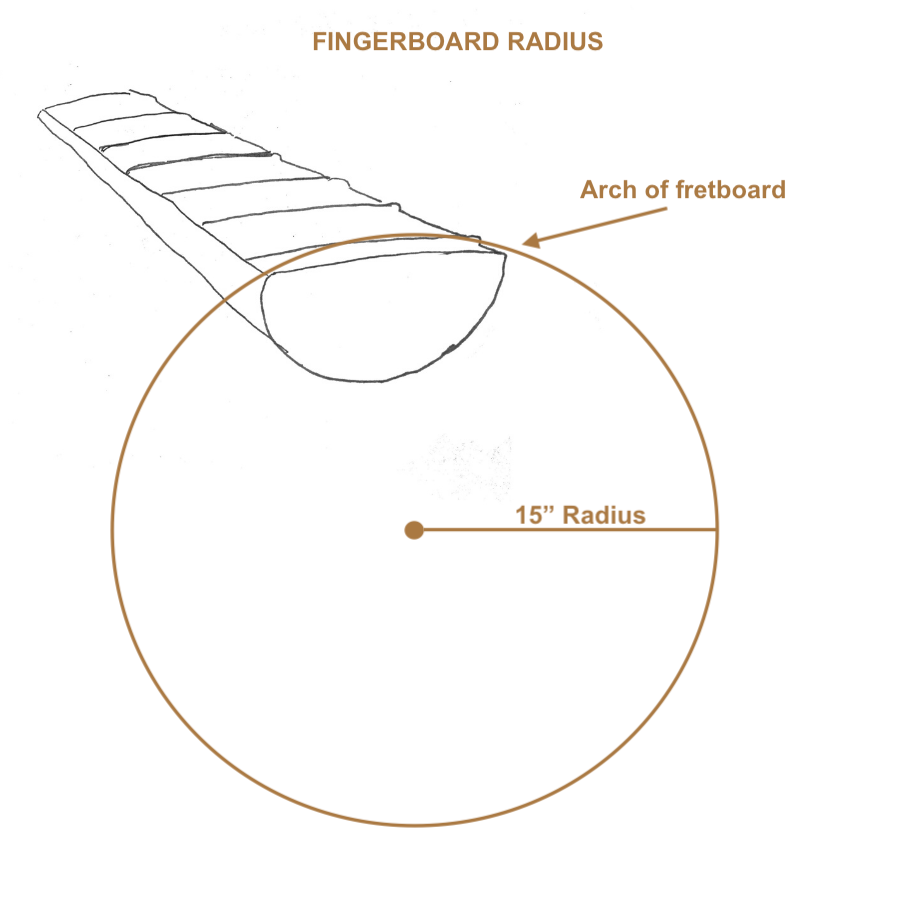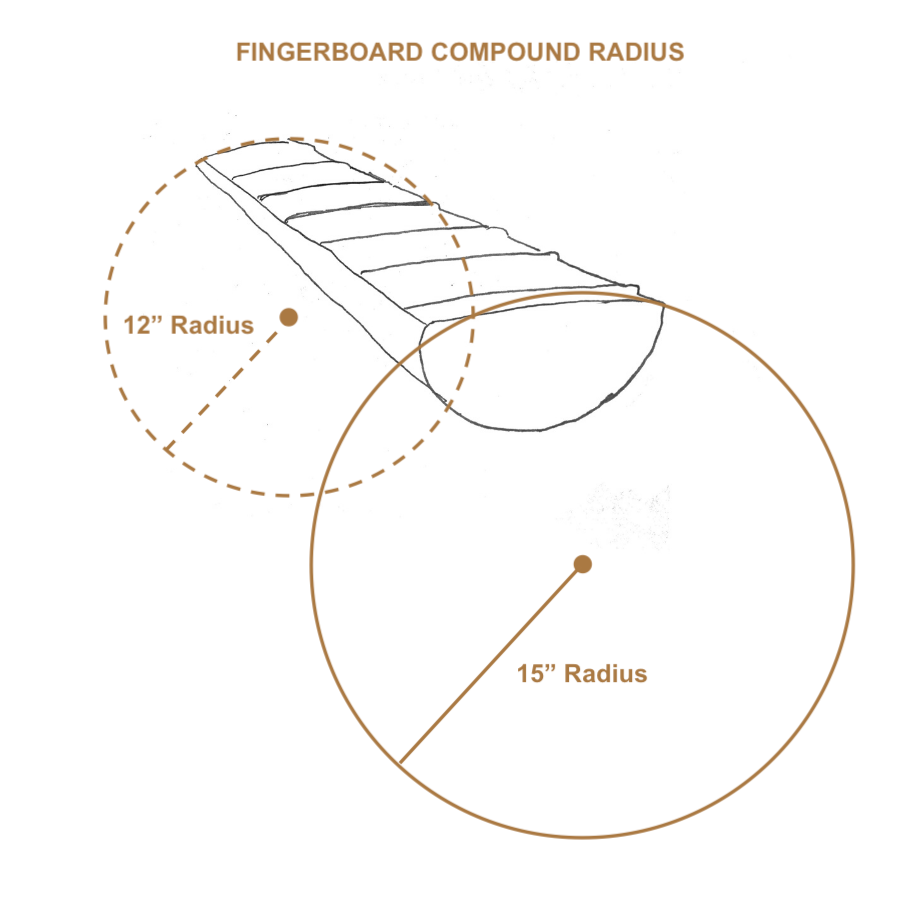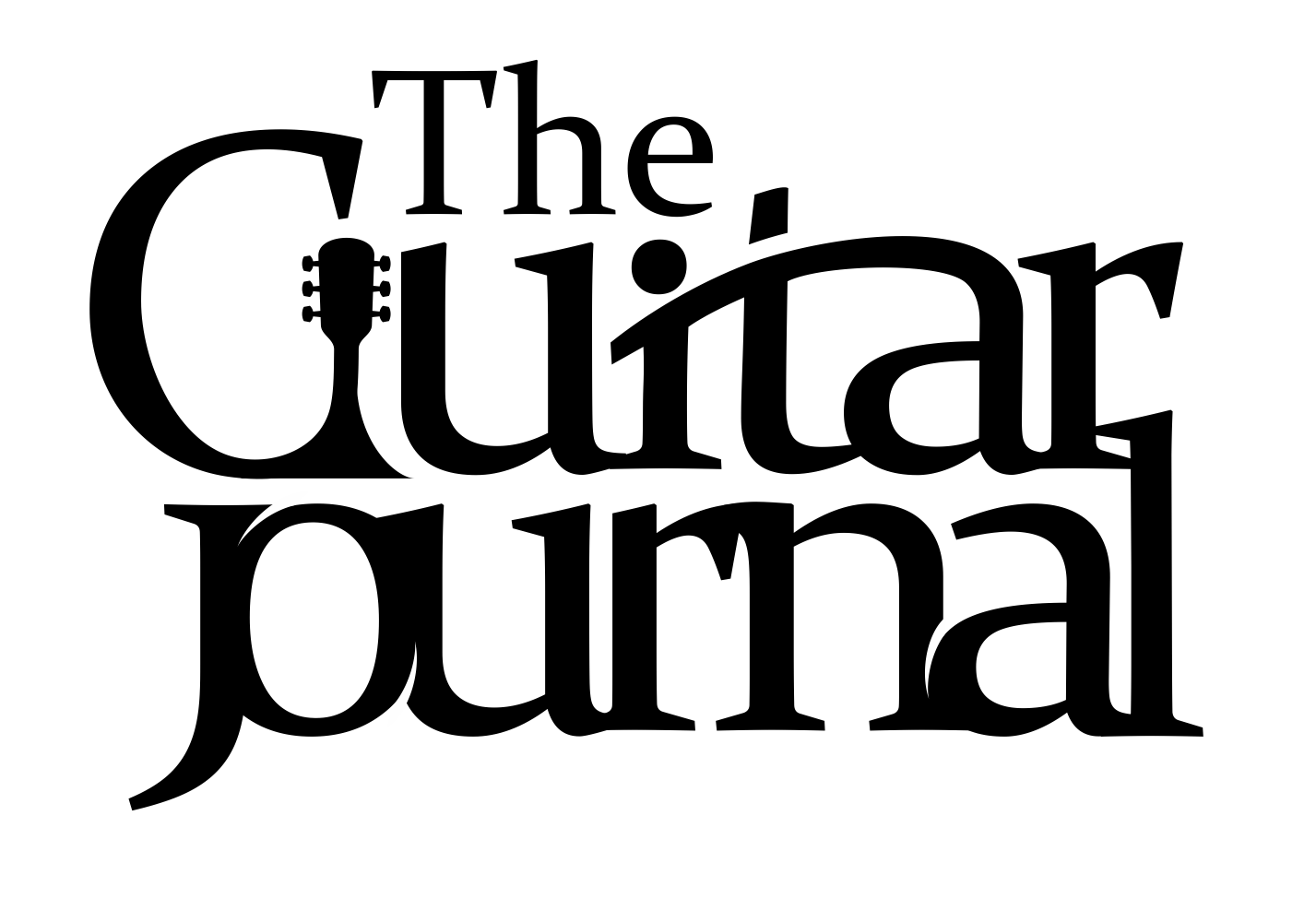What Fingerboard Radius Is Best For Fingerpicking?
Let's take a quick look at what a "fingerboard radius" is, how it effects your playing, and which radius (if any) is the best fit for contemporary fingerstyle players.
Let's take a quick look at what a "fingerboard radius" is, how it effects your playing, and which radius (if any) is the best fit for contemporary fingerstyle players.
A quick public service announcement: Obviously, I cannot tell you the "best" fingerboard radius for you! The best one is the one that feels good when you play it. And it may change depending on what style you're playing (more about that in a minute...). The tried and true method is to go out and play some different types of guitars and see which one you like best. Just sayin'.
Alright, having said that, there are some common preferences.
What Is Fingerboard Radius?
When comparing guitars, one of the specifications that you will run into is the "fingerboard radius". On acoustic guitars, this measurement is usually included under a section called "Specifications", which includes a long list of measurements of the size of the body, neck, frets, etc.
The simple definition is:
The fingerboard radius is the measurement of the arch of the surface of the fingerboard across it's width.

This measurement of this arch differs between manufacturers and models. In some cases, it can be very slight. In fact, on many instruments such as classical guitars, banjos, and resonator guitars, the neck is totally flat. Even some steel-string acoustic guitars (which are the usual choice for contemporary fingerstyle players) have completely flat necks.
Yet for many steel-string acoustic guitar manufacturers, using a specific fingerboard radius is one of the ways they increase the feel and playability of the instrument.
Let's take a look at which one is right for you.
What Is Compound Fingerboard Radius?
A quick clarification about fingerboard radius: there are actually two kinds.
Standard fingerboard radius means that the fingerboard has the same arch all along the length of the neck. From the nut to the 20th fret, the ratio is the same the whole way.
Compound fingerboard radius means that the ratio of the arc changes along the length of the neck. So, for example, the neck may be slightly flatter near the nut than up at the 12th fret.

The compound fingerboard radius is designed to optimize for different types of playing on different areas of the neck. Specifically, to allow for comfortable chording near the nut, and comfortable single-note soloing higher on the neck.
Which Is Best For Fingerstyle Players?
In general, contemporary fingerstyle players tend to favor steel-string acoustic guitars with shorter fingerboard radiuses. In other words, they prefer a more arched fingerboard.
The advantages of short versus flat fingerboard radius are:
- A shorter fingerboard radius (a more curved fretboard) usually feels more comfortable for playing chords and barring across the frets. The curve of the fretboard fits more naturally to the curve of your fingers on the neck.
- Bending notes on a shorter fingerboard radius is more difficult. In addition to pushing the note sideway, you have to push it vertically up as well, since your are pushing up along the rising arch of the fingerboard.
So, generally speaking, a shorter radius is more conducive to chord-based playing and a flat radius is more helpful for single-note playing.
Since many contemporary fingerstyle players utilize techniques that require voicing chords across the entire neck, playing single-note lines across the entire neck (not only past the 12th fret), and a limited amount of bending notes (as opposed to, say, an electric guitarist playing blues), it makes sense that a shorter fingerboard radius would be preferable.
It's worth saying again, though: this is all very much up to personal taste!
Below is some additional data describing which fingerboard radiuses are being used by which guitar manufacturers.
Some Examples From Popular Guitar Brands:
| Manufacturer/Brand | Which Models | Fretboard Radius |
| Ovation | Steel String | 10" |
| Boulder Creek | Most | 12" |
| Cole Clark | Most | 12" |
| Collings | Waterloo | 12" |
| Greg Bennett | Most | 12" |
| Guild | F-Series, D-55, D-40 | 12" |
| Lakewood | Most | 12" |
| Maton | Acoustic | 12" |
| Rickenbacker | Most Acoustics | 12" |
| Tanglewood | Most | 12.6" |
| Bourgeois | Most | 14" |
| Carvin | Most | 14" |
| McPherson | Acoustic | 14" |
| Santa Cruz | Most | 14" |
| Taylor | Everything but Classicals | 15" |
| Furch | Most | 15.75" |
| Teton | Most | 15.75" |
| Blueridge | Most | 16" |
| Breedlove | Most | 16" |
| Gibson | J-45 | 16" |
| Godin | Most | 16" |
| Guild | D-25 | 16" |
| Larrivee | After Nov 2017 | 16" |
| Lowden | Most | 16" |
| Martin | Acoustic | 16" |
| National | Most | 16" |
| Tacoma | Most | 16" |
| Takamine | Most | 16" |
| Froggy Bottom | Most | 20" |
| Rainsong | Most | 20" |
| Collings | Most | Compound (14" - 26") |
| Larrivee | Before Nov 2017 | Compound (16" - 21") |
When I look at the chart above, I notice a few things:
- You see shorter fingerboard radius (i.e. higher-arched fingerboards) on guitars catering to the fingerstyle crowd. The standouts here are Cole Clark, Collings, Furch, Maton, Bourgeois, Santa Cruz, and Taylor. I believe this is because contemporary fingerstyle playing utilizes a lot of chord-melody playing, which means voicing chords higher up the neck. A shorter radius makes that type of playing sound better and less fatiguing on the fretting hand.
- There seems to be a large number of acoustic companies utilizing a 16" fretboard radius. I surmise that this is because it represents a middle ground optimization between chord and single note playing styles.
- Notably, Froggy Bottom is using a 20" fingerboard radius - possibly to market to flatpicking players, with their extensive use of single-note lines?). Collings and Larrivee (pre-Nov 2017) use a compound radius setup. I actually own a pre-Nov 2017 Larrivee D-60 and it's a terrific guitar. I prefer it for open position strumming and picking, but not as much for Tommy Emmanuel-style fingerpicking arrangements.
Final Thoughts
What's the right fingerboard radius for you? Here's what I would do:
Think about what style you want to play. Find the players of that style whom you admire their playing. Look up the guitars their playing and find out what the fingerboard radius on their guitar is. Buy something similar (doesn't have to be same brand, just similar specs).
The best bet is to play an instrument like they're playing if you want to play the guitar style that they're playing.
Then, over time, as you try more guitars, you can start to keep mental notes about what fingerboard radius really is best for you.
Further Reading:
There's a lot of great articles out there on this topic. A few worth checking out if you're still researching:
https://www.acousticguitarforum.com/forums/showthread.php?t=158161
https://www.fender.com/articles/tech-talk/what-is-fingerboard-radius
https://www.acousticguitarforum.com/forums/showthread.php?t=574261
https://www.thaliacapos.com/pages/fretboard-radius-guide-by-guitar-make-model
https://www.humbuckermusic.com/pages/fretboard-radius-explained-article

